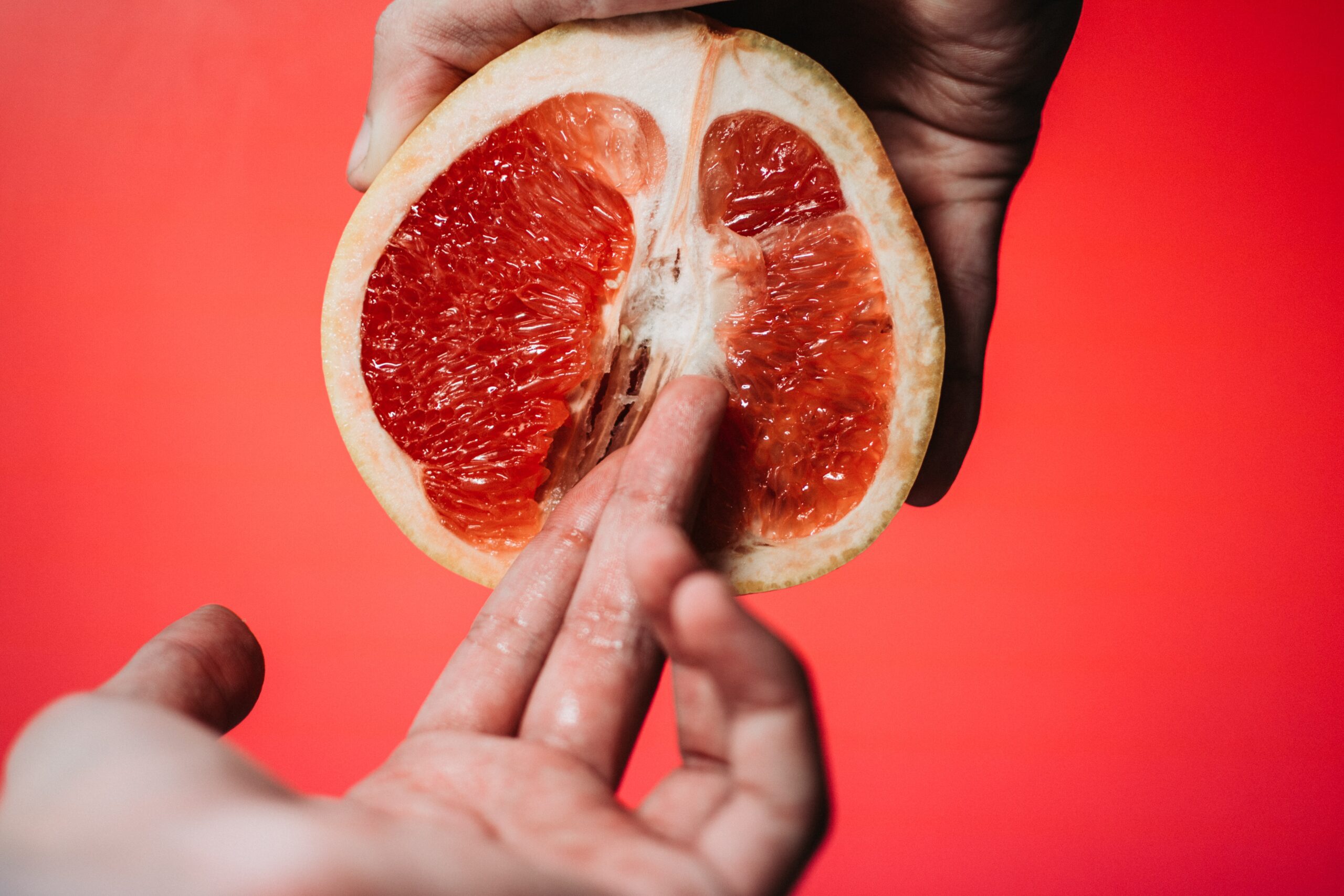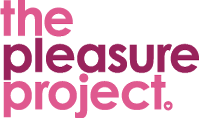Pleasure-positive messaging communicate positively & effectively.
Adopt evidence-based pleasure-inclusive language and imagery across your media and mediums.
Pleasure-positive messaging encourages you to use language that is inclusive and respectful of the diverse sexual experiences and backgrounds of your audience.
Many people may think that talking about sex and pleasure is the same as “talking dirty” or being sexually explicit. We at The Pleasure Project have found it effective to establish a balance. First, getting it right means not being offensive, but being conscious and respectful about language and the meaning and intent behind our messaging. We’ve found that it is most helpful to use language that is accurate, explicit, and clear for the objective of clarity, but at the same time, ensuring that the words we use don’t make people feel shame about their sexuality. Our messages should let people know how to have safer sex whilst still accepting that sex can feel good.
For pleasure inclusive sexual health, we need to consider how communicating with others can affect how they feel about their own sexuality and sexual identity. This is especially true as many of us have had sex negative experiences where we learnt shame or stigma about our sexualities. We should try and not replicate those negative images in sex education or explicit media. Being pleasure inclusive in our communication is directly linked with the Pleasure Principles “Rights First” and “Be Positive”.
Second, the way we communicate should vary depending on who we are talking with. We may change or adapt our pleasure-positive language if we are talking to our sex partner(s), our child, our family, or as a professional.
What is often missing in our professional interactions is information about how to have positive sexual relationships, how to experience and give pleasure, and get the most from our intimate relationships. We may need to create new languages for pleasure and experiences that go beyond existing sex words.
We at The Pleasure Project have found “Talking about Sex and Pleasure” or “Finding the Right Word” useful exercises to practise. We also use an “ice-breaker” exercise where we ask everyone to remember their favourite foods, the smells, tastes, and who made it. From that starting point, we can talk about the emotions conjured by those memories and how easy it is to discuss the subject of pleasure when talking about food. From there, we can compare how hard we find it to talk about our sexual experiences in a similar easy way. Over the years, we have gotten better at helping people feel safe to do this exercise. Usually, we don’t ask them to talk about their sexual experiences [although some want to] because it can feel so taboo to many people.
Having limited knowledge about their bodies prevents people from enjoying their own bodies, communicating with a partner about what feels good, and knowing how to seek and give pleasure. So sometimes, providing realistic information on how the body works can be a good start. Sexuality education/information and counselling that is clear and positive is a sexual right, and sex-positive sexually explicit media shows realistic bodies that represent a wider range of sexual identities and body types.
In our communication as professionals, the use of images on and offline is equally important. We want everyone to feel sexually empowered and enjoy the kind of sex that they want. This means whatever method of communication we use needs to be clear, realistic, inclusive and positive.
How can we Talk Sexy in our work?
Being clear means being transparent and not being vague by using expressions like “down there” or “between your legs”. Clear means using words for actual body parts like vagina, vulva, penis, testes. Have a read about how the clitoris was “discovered” here to see how knowing the names and functions of our body parts contribute to talking about and understanding pleasure.
However, it is also good to try and find a balance between using bio-medical words and words that may seem vulgar to your audience. You can start to understand what words people like using when talking about sex by asking them to write them on a flip chart or piece of paper. Our poster here shows the different and creative words for vagina and vulva from different languages.
People often invent new or use alternative expressions for sex. For example, sexually excited people might use the expression “getting turned on” to describe how they are feeling. Whatever words you use or create, they must be clear for everyone what you mean by them. You can ask people to say the words most used in their culture and see if the group understands them, feels comfortable with them or finds them offensive. We have done that at The Pleasure Project to know which words we can use for pleasure. Be careful to check in with the group and have fun. Language around sex and pleasure is amazingly creative. You can also take inspiration from initiatives like the one by Agents of Ishq mapping the word love across India and the New Sex Slang initiative by IPPF.
Being realistic means using words and images fo r actual body parts. For example, a picture to explain the clitoris should not represent it as the bulb that is externally visible but should show the whole organ. See some great examples here. On the right is the ‘Glitoris’ is an artist’s beautiful giant model of a clitoris.
r actual body parts. For example, a picture to explain the clitoris should not represent it as the bulb that is externally visible but should show the whole organ. See some great examples here. On the right is the ‘Glitoris’ is an artist’s beautiful giant model of a clitoris.
We can have fun whilst also showing the body correctly. In doing so, we can bust myths, like sexual pleasure being the same as an orgasm.
Sexy images must also be respectful. You can use language and images that are positive, inclusive, real and respectful and convey the message that we all have the right to freely and safely enjoy sex, whether we are on our own or with a partner.
Being positive means that you avoid referring only to risks and unwanted consequences of sex. It means that you find enjoyable entry points to talk about sex. For example, what kind of food do you like most or what is your most enjoyable meal? From here, you can move to asking why is it easy to talk about that but not about your (idea of) the most enjoyable sexual experience? Being positive means that you don’t refer to the first sexual intercourse as “losing your virginity” but as gaining a new experience.
Being positive is about making safer sex more pleasurable. It means that you actively promote pleasure as a key ingredient for people to practise safer sex and use protection. For example, introducing the (female/internal ) condom as a sex toy. Or talking about how sexy it is to be prepared for sex. See these videos here and here for some examples (Also read The Pleasure Principle Be Positive).
Being inclusive means ensuring that everyone’s sexual pleasure is addressed regardless of sexual preference, identity, (trans)gender, (dis)ability, and age. Sex is not only a penis in the vagina/anus. Celebrate all kinds of sexual activities. These include, but are not limited to, oral sex, penetrative vaginal sex, penetrative anal sex, using a sex toy, (mutual/shared or solo) masturbation, rimming (licking and kissing the anus), kissing, and sexual contact (touching intimate areas). It is important not to make assumptions about how people experience or enjoy sex. Gender norms, sexism, homophobia, transphobia and other forms of prejudices and stereotypes can limit many people’s opportunities for sexual pleasure. This creates different levels of inequality and prevents people from experiencing sexual pleasure and enjoyment.
‘Spicing’ or ‘Sexying’ up our corporate communications, marketing and advertising does not mean necessarily being sex positive. It is always important to look at different perspectives and whether in our communication we are also being inclusive and respectful or whether we are using certain images and messages which stigmatise, and hyper / hypo sexualize specific groups. Some feminist and independent media are made to be sexually explicit to make people feel good about a wider range of relationships and acts, whilst also being realistic about sexy safer sex.
Think of everyone’s ability to access your content. When using visual communication include captions, subtitles and transcripts. This will allow anyone using a screen reader to access the information they contain. To make our communications truly inclusive, it is vital to consider that every single person communicates, and interacts with communications, differently. Therefore, providing more options allows more people to engage. So, let’s spend a bit of time and try to produce our communication in multiple formats to allow as many people as possible to enjoy it.
Tips and Actions
- Practise feeling comfortable discussing sex, sexuality, safer sex, and sexual pleasure. Feeling comfortable discussing these issues enables you to deliver the most appropriate services and information to each individual. You may be nervous about discussing sexual matters like positions, orgasm, or sexual acts you don’t practise yourself, but you don’t need to be a “sex expert” to adopt a positive approach when talking about sex and sexual pleasure. you can encourage a group to share their own experiences of what makes them feel good and safe. Do not shy away from talking openly and positively about sex from the start. In doing so, you acknowledge the fact that sexual pleasure is an important issue.
We have put together some conversation openers you can use to start talking sexy (and safely) about sex [these are just cues you might want to reflect on / adapt]
In conversations, depending on the situation, you can ask:
- What was your most pleasurable safe sexual experience and why? rather than
- Why did you have unsafe sex? What felt good when you used a condom or practised safe sex?
Other questions you can ask:
- Do you enjoy sex? When do you enjoy pleasurable sex?
- Do you hear other people talking about enjoying sex? What kinds of things do you hear?
- When did safer sex feel good?
- What were you told about sex when you were younger / before you got married?
- When did you enjoy safer sex – what made it fun or easy?
- Do you think that people need to have sexual pleasure for a relationship to work?
- How does someone / a couple go about having a good sex life? What does this involve?
- What kinds of touch do you enjoy?
- Are there any intimate/sexual activities you’d like to do more of or try with your partner(s)?
- Don’t let cultural norms determine all your conversations or stop you from telling the facts about pleasure and sex. It might not be considered appropriate to discuss sex and sexual pleasure in your context. However, you can find ways to model conversations in a way that people feel safe and accepted. Listening only to existing cultural norms may reinforce harmful and gender-stereotypical actions and prevent people from finding out how to talk about and enjoy safe sex. Find entry points that make it easier to talk about sex. For example, when explaining consent as “Always ask for a yes. Always accept a no”, include discussions about clear negotiation and how boundaries and limitations might be better discussed before you (or both of you) become sexually aroused. This video is useful in understanding the nuances of consent.
- None of us like to think that we are biased, but the truth is that we all are, as we are often influenced by the society and culture, we live in. However, overcoming biases is a process which begins with simply acknowledging and identifying our own hidden bias. We can start by developing our understanding of inclusion within our organisation – make this specific to your business, not the generic explanations you’ll find online. Then move forward in every communication keeping that understanding and awareness in mind.
- Look at your communication and language about sex and sexuality and what it can convey. Try to use more positive language.

- Start a discussion or group work by getting participants to put all the words they use in their language or context for pleasure, sex, and genitals. It’s a fun way to break the ice and know what words make all participants feel comfortable. See a great example here from Agents of Ishq. https://images.app.goo.gl/1g8jtueZSfsY4R2UA
- Don’t make assumptions about other people’s pleasure – ensure your communication is open to everyone. For example, don’t assume women who have undergone female genital mutilation (FGM) cannot enjoy sex anymore. Depending on the severity of the FGM, many still enjoy manual/oral stimulation. Using lubricants may be helpful. (For more about this see Pleasure Principle Think Universal)
- When you use images, it is essential that people feel that their bodies and sexualities are reflected in the images shown. Images are powerful. They impact the way we see and experience our (sexual) self. Many images that exist on the internet are incomplete, incorrect, or simply problematic. Most often, images linked to sexual health are heteronormative, cis-normative, they assume gender identity follows biological sex, white, young, male, and penetration-focused. People with internet access are becoming more used to specific types of images of “hyper-sexualised” situations and only certain types of bodies or pleasure. For example, this might mean people think women always shave their genitals as shown in pornographic films. (For more information on more inclusive representations of different body types/ethnicity, see The Global Mapping of Pleasure)
- We often have to get creative when sexual or real images are censored. Often, fruits like bananas, cucumber, melons, or aubergines are used to depict a penis or a vagina. Think about how you can use these images in a fun, creative, and beautiful way but also inform people about their bodies by using explanations that are clear, fact-based and sexy.
Not like this

but like this

alternative when there is censorship

- Try and think about images that show sex as an act that involves more than the genitals. Body language and simple verbal messages can stigmatize or de-stigmatize sexuality and sexually pleasurable actions. It is good to be conscious that you do not promote shame or stigma. For example, non-penetrative sex or anal sex can be very pleasurable for many people.
- Be careful not to show just the penis or vagina when you are explaining, for example, the use of a condom; you don’t want to make sex into an action between genitals or assume that sex is only penis in vagina.
- Be careful not to use words like normal or abnormal – these are value-laden words. Similarly, think about the words “natural” or “unnatural act” and how that might make people feel. Some words carry meanings that exclude people and activities. Similarly, avoid words like promiscuity, transactional sex, “indulging” in sexual activities, premarital sex or extramarital sex when referring to consensual ethical non-monogamy or polyamory.
Further resources you might find useful
Beyond Bananas: a guide to identify good pleasure focused imagery developed by Share-Net Netherlands in 2022 provides useful guidance to supporting you in developing and sharing more comprehensive and pleasure-positive education and knowledge.
Catania L, Abdulcadir O, Puppo V, Verde JB, Abdulcadir J, Abdulcadir D. Pleasure and orgasm in women with Female Genital Mutilation/Cutting (FGM/C). J Sex Med. 2007 Nov;4(6):1666-78. doi: 10.1111/j.1743-6109.2007.00620.x. https://pubmed.ncbi.nlm.nih.gov/17970975/
Hotoctopuss.com: Sex toy company which is passionately inclusive and celebrates diversity, actively working to break down stigmas around all forms of consensual sexual expression.
IPPF (2016) Putting sexuality back in comprehensive sexuality education.
Journal of language and sexuality
Quest by Enhance the UK (disability awareness charity) and a UK’s leading sex toy manufacturer and designer: a line of inclusive sex toys and aids (to be released in May 2022)
The Clitoris Summit 2021: The Clitoris Summit was the first summit to highlight a range of evidence on why the clitoris is important and has been neglected in medical practice.
Undressing disability campaign: a campaign aiming to raise standards in sexual health and sexual awareness for disabled people
Healthy Pleasure Agency: the first he first full service agency committed to the growth of Sexual Health & Technology brands from start-ups, market leaders and those all important challenger brands
Simonsson, A. (2020) Smooth conversations: sexuality as a linguistic resource in a secondary language classroom, Discourse: Studies in the Cultural Politics of Education, 41:1, 21-31, DOI: 10.1080/01596306.2018.1481825
The Pleasure Project https://thepleasureproject.org/pleasuremap/
Some sexually explicity media attempt to break stereotypes and educate viewers on what good safe sex and sexual rights means. These might be useful examples:
Make Love Not Porn – a pornographic website that uses real people’s experiences
OMG Yes : Research based approach to pleasuring women
Pink and White Productions – queer independent porngraphy
Sex School Hub: An explicit sex education website
Sources for images
https://www.allure.com/story/sex-acts-defined
https://www.anatomyofpleasure.org/the-womb (diagram drawings + clitoral complex)
https://www.pharos.nl/begrijpjelichaam/seksualiteit-en-voortplanting/seks/#10 (male-male sex + wet vulva – but Caucasian only)
https://unsplash.com/s/photos/sex-education(good but fruit also good sex toy masturbation)
https://www.thevulvagallery.com/ (vulva diversity + educational diagrams paywall) German/Dutch/English/Spanish
Videos
Grumpy Princess, No Means No (But so do other things too!) (consent song)
Key & Peel , Cunnilingus Class (fun song – oral sex class)
Key & Peel, Feminist Pirate Chantey (fun song -feminist pirates)
InQueery: what does Intersex mean (info on intersex, video. No pictures)
DKT Condom adverts
Great social media to follow – talking sexy in a positive way
